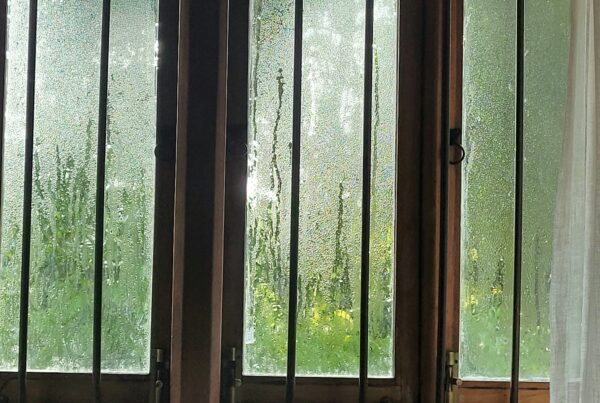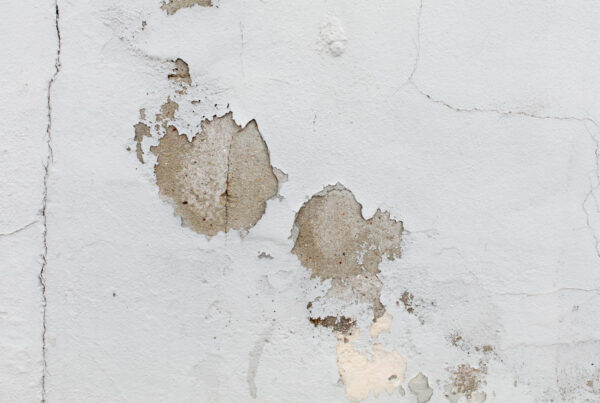Structural damage in your home can develop gradually or appear suddenly, threatening your property’s safety and market value if left unaddressed. Recognising early warning signs of structural damage helps you get a professional assessment before minor issues escalate into expensive repairs or safety hazards.
Keep reading to understand the common exterior and interior signs of structural problems, learn what causes building damage, and know when to call the specialists to help.
How Can You Identify Structural Damage in Your Property?
Identifying structural damage early prevents minor issues from developing into serious safety hazards or expensive repairs that are avoidable. Exterior and interior warning signs help property owners recognise when professional assessment is necessary.
Regular property inspections let you monitor for new cracks, movement, or changes that may indicate developing structural problems. Weather exposure, ground movement, and foundation issues may manifest first on exterior surfaces before affecting interior spaces.
Exterior warning signs of structural damage
External structural damage often becomes clear before interior problems develop, making regular property inspections key for early detection. Important exterior warning signs include:
- Wall cracks and movement – Vertical, horizontal, or stepped cracks in external walls indicate foundation settlement, subsidence, or structural movement
- Roof line problems – Sagging roof ridges, displaced tiles, or visible structural timber deflection suggest load-bearing issues or timber deterioration
- Window and door frame distortion – Frames that stick, won’t close properly, or show gaps indicate building movement or foundation problems
- Chimney lean or damage – Tilting chimneys, loose pointing, or separated chimney stacks suggest serious structural movement requiring immediate attention
- Foundation issues – Visible cracks in foundation walls, stepped cracking in brickwork, or areas where walls meet foundations show settlement problems
Ground conditions around your property influence structural stability. Poor drainage, tree root damage, or clay soil movement can cause foundation settlement, leading to progressive structural damage.
Properties affected by persistent dampness face increased structural risks as moisture weakens building materials over time. Our damp proofing solutions address these structural problems caused by long-term moisture exposure.
Interior warning signs of structural damage
Interior structural damage develops as external problems progress, creating visible symptoms throughout your home’s living spaces. Interior structural warning signs include:
- Wall and ceiling cracks – Cracks appearing above doors, windows, or in ceiling corners indicate structural movement or settlement
- Floor problems – Sagging, bouncy, or sloping floors suggest structural timber damage, foundation issues, or load-bearing problems
- Door and window operation issues – Internal doors that won’t close, stick, or show expanding gaps indicate building movement
- Plaster damage – Cracking, bulging, or failing plaster on walls and ceilings can indicate structural movement or moisture penetration
- Stair problems – Creaking, movement, or separation where stairs meet walls suggests structural timber issues or building settlement
Dampness-related structural damage creates risks for timber elements. Persistent moisture exposure can cause dry rot and wet rot, which weaken load-bearing timbers and compromise structural integrity.
What Causes Structural Damage in Properties?
Primary causes of structural damage include:
- Foundation settlement – Clay soil movement, poor drainage, or inadequate foundations cause buildings to settle unevenly.
- Moisture damage – Long-term dampness weakens building materials, causes timber decay, and can lead to structural timber failure. This can be particularly comming as a result of poor basement waterproofing, particularly in older homes.
- Ground movement – Subsidence from tree roots, mining activity, or soil erosion affects foundation stability and building alignment.
- Poor maintenance – Neglected roof repairs, blocked gutters, or damaged pointing allow water penetration that gradually weakens structures.
- Building defects – Inadequate original construction, unauthorised alterations, or removal of load-bearing elements compromise structural integrity
Timber preservation issues also result in structural damage, especially in older properties. Woodworm infestations and fungal decay can seriously weaken structural timbers, mainly in roof spaces and ground-floor areas.
When Should You Get a Professional Structural Assessment?
A structural assessment becomes necessary when you identify potential warning signs or notice progressive changes in your property’s condition.
Contact structural specialists immediately if you notice sudden crack appearance, doors or windows that suddenly won’t close, new floor sagging, or any signs of rapid structural movement. These symptoms may indicate serious foundation problems requiring urgent attention.
Properties showing multiple warning signs need a comprehensive assessment to determine whether problems stem from foundation issues, timber decay, or dampness penetration. A key part of our work involves working with structural damage caused by long-term dampness exposure.
How Can You Prevent Structural Damage?
Effective structural damage prevention focuses on protecting a building’s integrity through regular maintenance and addressing problems before they escalate.
Regular external maintenance prevents water penetration that can cause long-term structural damage. Keep gutters clear, repair roof damage promptly, and maintain external pointing to prevent moisture ingress. Address drainage problems around foundations to prevent ground movement.
Internal moisture control protects structural timbers from decay and preserves building integrity. Adequate ventilation, prompt leak repairs, and professional treatment of dampness problems prevent moisture-related structural damage.
Annual property inspections help identify emerging problems before they cause serious structural damage. Monitor for new cracks, check door and window operation, and investigate any changes in floor levels or ceiling alignment.
Protect Your Property with Expert Structural Assessment From Refresh
Structural damage threatens a property’s safety and value and requires prompt professional assessment to identify causes and implement practical solutions. The experienced building specialists at Refresh Property Services and Consultants understand how dampness, timber decay, and waterproofing failures contribute to structural problems in London properties.
Our assessment service identifies whether structural damage is related to moisture ingress, timber preservation issues, or waterproofing failures, which we can address through targeted treatments. Early intervention protects your property investment. Contact us today for professional structural assessment and expert treatment solutions



